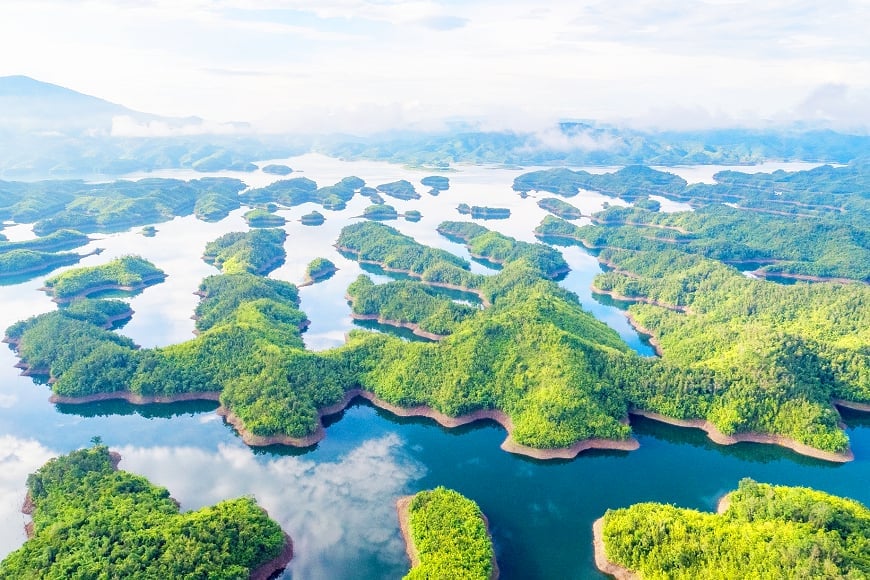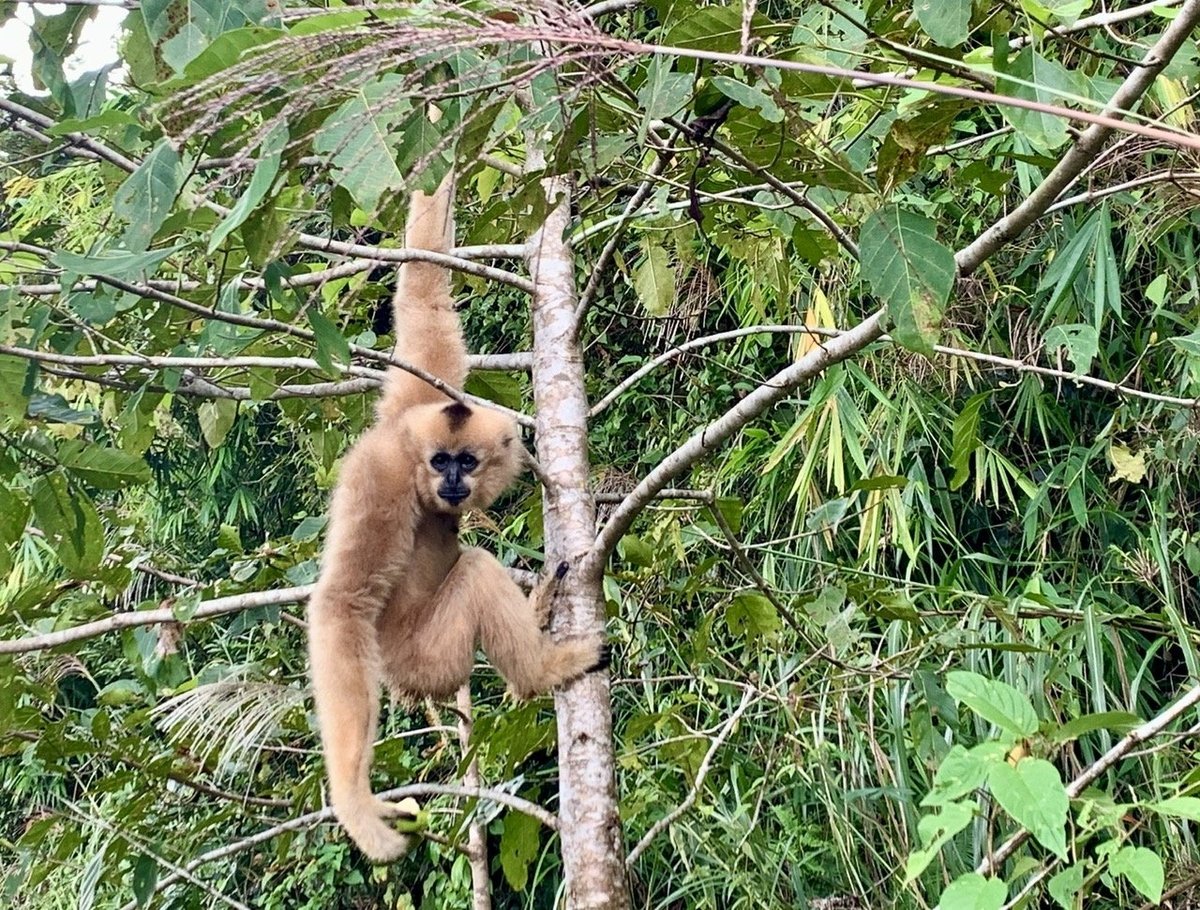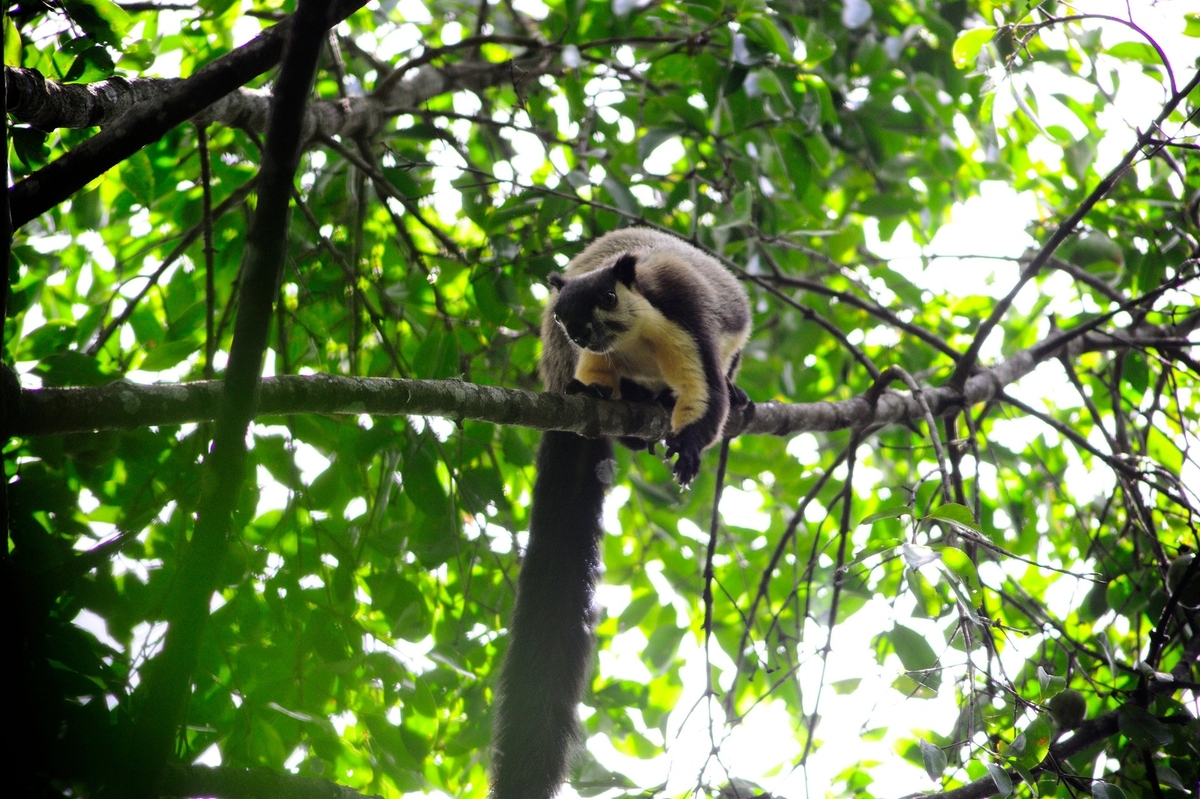December 4, 2025 | 18:53 GMT +7
December 4, 2025 | 18:53 GMT +7
Hotline: 0913.378.918
December 4, 2025 | 18:53 GMT +7
Hotline: 0913.378.918
Ta Dung National Park is situated in Ta Dung Commune, Lam Dong Province. This region is located at the ecological intersection of the Mnong Plateau and the eastern slopes of the Truong Son Mountain Range. It is characterized by rugged terrain, a cool climate, and copious rainfall, which are the perfect conditions for a diverse and thriving forest ecosystem.

Ta Dung has a very diverse ecosystem, so many types of animals and plants have good living and development conditions.
In 2018, Ta Dung was officially upgraded to a national park, comprising over 20,000 hectares of forest, after being originally designated as a nature reserve. The core and mountainous regions are the primary locations for evergreen broadleaf forests, which comprise approximately 57% of the total. Mixed forests, bamboo forests, and regenerating forests are also present in the park, resulting in a diverse array of habitats that span from lowlands to mountaintops.
To date, Ta Dung National Park has recorded 1,432 plant species, which range across six phyla, 191 families, and 769 genera. The Magnoliophyta (flowering plants) dominate the landscape. The park is home to many valuable timber species such as Dalbergia (rosewood), Pterocarpus, Michelia tonkinensis, Calocedrus macrolepis, and Aquilaria (agarwood), which not only carry significant economic value but also play a vital ecological role in stabilizing highland ecosystems.
Mr. Khuong Thanh Long, the Director of Ta Dung National Park, has stated that this region functions as an ecological transition zone between the East and South Truong Son ranges. The region is characterized by high elevation, humidity, and a nearly pristine forest cover. Due to its exceptionally high rate of endemism and abundance of species, it is regarded as a biodiversity center in the Central Highlands.

Ta Dung National Park always focuses on biodiversity conservation.
Ta Dung functions as a crucial genetic reservoir for botany and is instrumental in the research and restoration of native tree species for sustainable forestry. More than 98 plant species are listed in the Vietnam Red Data Book and the IUCN Red List.
Ta Dung's biodiversity is not limited to its flora. A rarity of 229 bird species, which inhabit the area year-round, is among the 639 recorded animal species across seven classes that call the park home. This underscores the park's significance as a stopover site for both local and international migratory species.
It is worth noting that the park is home to populations of numerous endangered and uncommon animals, including the black-shanked douc langur, Javan pangolin, large-antlered muntjac, dhole (Asiatic wild dog), and Indochinese leopard. The CITES Convention and Decree 84/2021/ND-CP ensure the severe protection of these species. Numerous species, such as the douc langur and muntjac, are classified as ecological indicator species, which implies that the forest in this area maintains its original structural and functional integrity.

The park is fostering partnerships between forest rangers and local communities to monitor and prevent illegal hunting and exploitation, as well as to promote scientific research and habitat restoration for endemic species.
Mr. Khuong Thanh Long observed that the park has verified stable populations of a variety of endemic and endangered species through expert surveys and camera traps, thereby emphasizing its significant conservation value. "Ta Dung is not merely a green lung; it is a valuable gene bank of the Central Highlands", he underscored.
Ta Dung is home to a diverse array of reptiles and amphibians, including king cobras, reticulated pythons, and horned toads, in addition to sizable mammals. Over 70 species have been identified. The park's headwater streams also sustain endemic fish and rare mollusks, which is indicative of the high environmental quality and minimal disturbance.
“We are implementing community-based conservation models and working closely with scientific institutions both domestically and internationally to conduct research, monitoring, and capacity building for conservation,” Mr. Long added. "Biodiversity protection cannot be done in isolation, it must be tied to local livelihoods and effective forest governance".
Ta Dung National Park has established biodiversity conservation as its primary objective due to the abundance of endangered species and the park's diverse ecosystems. The park is fostering partnerships between forest rangers and local communities to monitor and prevent illegal hunting and exploitation, as well as to promote scientific research and habitat restoration for endemic species, according to Mr. Khuong Thanh Long's statement. Such efforts demonstrate a resolute dedication to protecting the invaluable primary forest heritage that is the character of the Central Highlands in the face of increasing climate and human pressures.
Translated by Linh Linh

(VAN) As of 2025, the ASEAN region has a total of 69 ASEAN Heritage Parks recognized across its 10 member states. Among them, Viet Nam contributes 15 ASEAN Heritage Parks.

(VAN) Yok Don National Park has high biodiversity with numerous endemic plant and animal species, and it is also the only dipterocarp forest ecosystem conservation area in Viet Nam.

(VAN) Viet Nam and Brunei signed two important MOUs on fisheries and IUU, expanding cooperation in agriculture, the environment, and Halal exports, aiming to substantively implement joint projects.

(VAN) The Viet Nam Coconut Association worked with the International Finance Corporation (IFC) and businesses to promote the supply chain, enhance competitiveness, and develop the coconut industry sustainably.
![Hue aims for Net Zero: [2] Pioneering low-emission tourism](https://t.ex-cdn.com/nongnghiepmoitruong.vn/608w/files/huytd/2025/12/04/0633-dulichzero-4-095634_236-161125.jpg)
(VAN) The ancient capital of Hue has developed Net Zero tourism products and models, aiming to reduce carbon emissions and pioneer the establishment of Viet Nam's green tourism destination.

(VAN) C.P. Viet Nam has announced the successful completion of its goal to plant 1.5 million trees during the 2021-2025 period, a key milestone within company's long-term ESG strategy and its roadmap for emission reduction.

(VAN) This is an initiative of MAE aimed at creating a unified coordination mechanism to implement agricultural cooperation programs with developing countries.